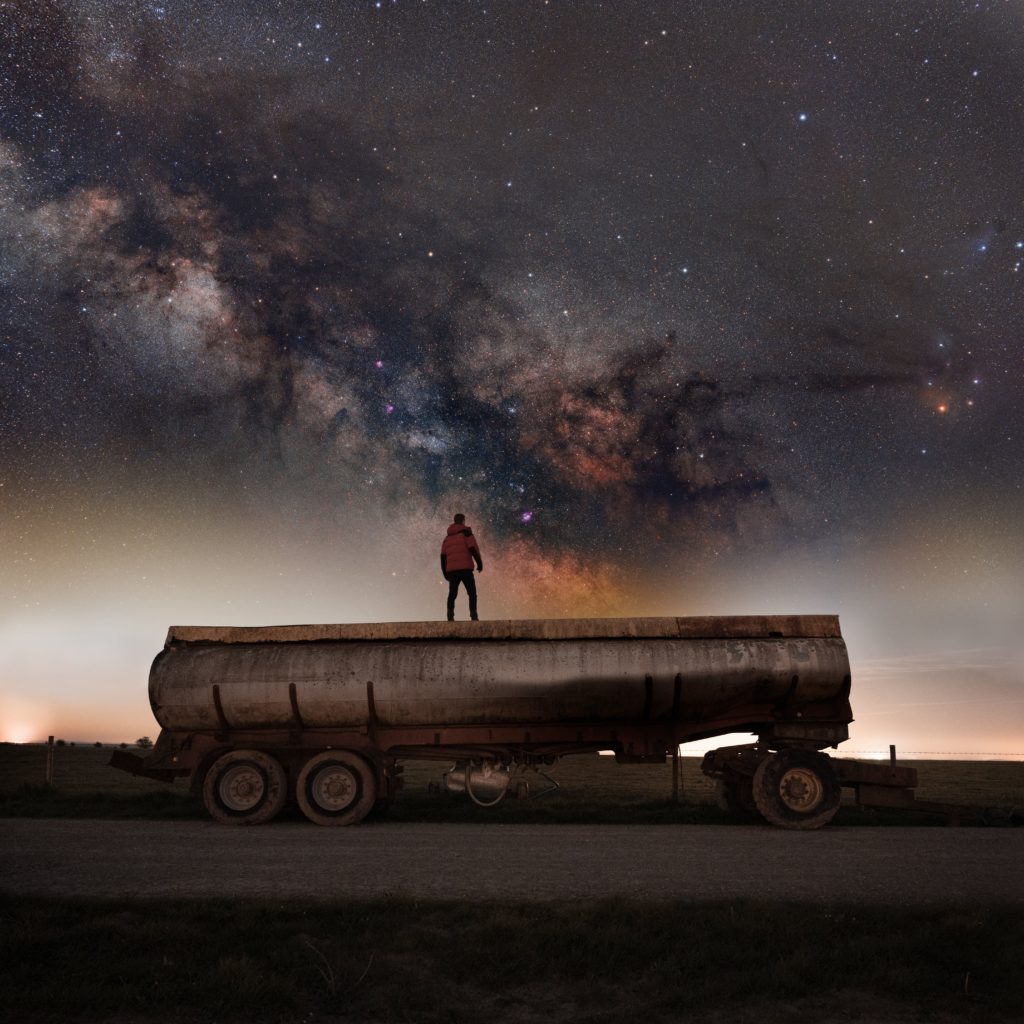Will Bowles, winner of the astrophotography competition, tells us about how he took his stunning photograph.
I’’m Will, a 4th year Biochemist at St. Andrews and here’s some info about how I took the photo:

This photo was taken on the 10th of April 2019 from about 1am-4am. You get to see far more of the milky way core the further south you go in the UK, so taking this picture on Salisbury plain meant that I was able to see so much of the core of our galaxy.
After a run up the hill in the daytime to scout out a good location, I planned the shoot for that night, looking directly south. I then waited up until about midnight, making hot chocolate and making sure my camera cards were empty and batteries were charged. At this time of the year, the core rises up as the night goes on, so I hiked a few miles up the hill again in the pitch black and eventually got to the top at about 1am. I then set up my tripod to take the foreground shot. Because the stars appear to move across the sky, this means that any exposure longer than 20ish seconds gives blurry or streaky stars, so the foreground and sky photos have to be taken separately (although I never move the tripod in between shots to ensure that I have a ‘real’ photo at the end of the process).
An old, abandoned oil tanker looked like the perfect foreground, but I just wanted that extra bit of interest in the photo, so I had to set my camera on a self-timer and climb up on top of the tanker – rather hard to do in the dark. After taking a few photos in different positions (trying to stay absolutely still), I climbed back down and was happy with the results – now I just had to wait for the core to rise.
In the hour between 1am and 2am, I set up my star tracker – this is a piece of equipment that moves slowly with the rotation of the Earth so as to negate all star movement when properly aligned with the axis of rotation (i.e. pointing at the north star for northern hemisphere). This allows you to take photos of up to 3 or 4 minutes long, while keeping the stars pin sharp and round – of course the only downside is that the foreground gets very blurred as the camera moves in relation to the ground now.
Using this method, I then began to take photos of the stars – I took 17 pictures of the same portion of sky, each photo was 2 minutes long, at ISO 3200 and f5. I have worked out through trial and error that these are the absolute best settings for my camera (Nikon Z6 with 24-70mm f4 lens) to maximise detail and sharpness. I then took another 20 black photos with the lens cap on – you might think that’s weird, but there’s a good reason for it: the black photos create a ‘map’ of your sensor which show if there are any pixels that are stuck, and shows up all of the noisy grain that is background noise and isn’t due to any light signal.
Why did I take so many photos of the sky and the black photos? Stacking. If you stack all of these images together, one on top of the other, this averages out all of the grainy noise and increases the effective signal strength of what’s actually in the photo (The Milky Way!). So, after stacking together my 17 light pictures and my 20 dark pictures, I subtracted all the data in the dark stack from the light stack. This gives you a wonderfully clean and crisp image, which you can then really begin to push in your processing programme. To do all of this, I use a programme called Pixinsight. After I had tweaked the shadows and highlights and lights and darks, I merged my foreground photo up with my background (starry) photo and tweaked the colours slightly (for my taste – I love orangey yellows in The Milky Way). And that’s the whole process!
So, in total, (scouting, planning, travelling, photographing, editing) I think this photo took around 14 hours to complete. I hope you agree it was worth it! Astrophotography is, I think, the most technical kind of photography you can attempt – there’s so much to dig into (if you want to improve), and the incremental improvements you make really add up to give something special. For me, I have learned how to do this over the past few years, and it’s great fun, but the thing I really love is setting my camera off taking photos and just sitting quietly on the ground and looking up – it really humbles you to what’s out there and what a tiny part of it all we are.
If you wanted to see any more of my photos or had any questions about anything, feel free to contact me:
Instagram will_b133
Website https://willbowles.myportfolio.com

